Text
Naruhisa Arakawa interview made at the time of the second core of the show

The catchphrase of the interview: The surprising reality of the regular cast!?
Introduction: Mr Arakawa, as the current main writer of Kamen Rider Kuuga, will share with us the hardest challenges of the screenplay with some fun facts. As the show enters the last run in the development, we heard the most interesting stories about it.
Int: Can you tell us how things got in this way regarding Kuuga? Usually you are known for comedic works like the Noodle Dimension episode in Jetman.
Arakawa: Yeah, that’s right. Whenever I went with something serious or serial for the plot it all got rejected. It looks like Takatera, having this in mind, he got the approval that this time it would have been fine to go for it. But 2 weeks later I got stuck with the intentions and I was wavering. It’s just that my writing was sluggish. (LAUGH). Furthermore Kamen Rider. It would be different if it was just a matter of coming up with a likable character but there’s a huge responsibility since, when I was little, I assisted a never-ending cast of new instances of it. So I had to get approval before I was able to make decisions, after so many, finally, I was able to grow confident with how I wrote. I can say that it was the time that I knew for sure that I could come up with a totally different concept of a Toei hero.
Int: I heard that you imposed different kinds of constraints on the playwright in order to remove any hazardous coincidences. For example in episode 12, Sakurako and teacher Kanzaki took the bus, which is usually planned for a situation of assailing I think
Arakawa: Instead of constraints, they’re more like a sign of a noncontingent development. In order to make the drama stand in contrast with a plot oriented toward the action. So, I managed to establish the warming atmosphere between Sakurako and Kanzaki without making it lose its value.
Int: It’d be bothersome to keep fending the drama and action in the scenes
Arakawa: On the contrary, that was a story that I couldn’t help to hope but it went well. The risk for such situations is unconventionally high. As a consequence, I’m betting on giving the guest cast their own reality as a countermeasure. I think it would be beautiful if they could support Yusuke, who is working hard as Kuuga, even if they don't do so directly.
Int: It seems these Kuuga episodes are absent from flashback scenes.
Even if in the past flashback scenes were said to be difficult to portray to children, in reality there are so many of them. So actually they could be portrayed in a way that it would be easy to represent them but somehow it would have blurred the line of events, or more likely the techniques used to develop them are incredibly complicated. In the present, the scenes are shot with high resolution, so when it comes to giving the scenes an accuracy of depiction, the ones with flashbacks are clunky to portray. So, with the common means out of options, we made it out with our intuitions. When we started, there were times we regretted doing it, but as a result, the feeling was conveyed. In episodes 1 and 2 we started to put opaque projectors in some circumstances since we naively thought that it was interesting. But after it became really difficult to maintain the schedule (LAUGH). In episode 26, if Kanzaki was going to follow Taku to Tokyo, he would have used the bullet train. At first, I wrote the story assuming that he would take a conventional train, so I had to rethink the timetable to see if it would work.
Int: It seems that you really look into the organization of the police.
Arakawa: There were things out of my reach, but I managed to collect some info on the internet that I could put into use. But there were facts that I couldn’t stick as in reality too. For example, a real patroller when he’s in the middle of a case he’s got time to relax too, he must not bear to have a full day invested in the case, but if I had to stick with it I would have lost the tension that the cases manifested. I heard that they don't actually have a special name for the head of the task force, but I thought it would be a good way to show that he is the most important person in it. I've asked a producer to objectively judge the situation so that it looks realistic while lying a little. I once tried to write a police correspondence faithfully, but there were many special terms and it became too long. Also in the beginning I used to write dialogues that addressed the headquarters in a certain way, but the officers, in reality, address them in a different way mainly so I changed it in the middle in a panic (LAUGH).
Int: I think what drags Kuuga’s synergy is the output of outlook in life and ethics, but regarding the character of Yuusuke, is there something in him that is in you?
Arakawa: Although there are parts to which I had to contribute with my personal viewpoints too. Then, I arranged elements which I thought they could be read in a script, in doing this, I sorted out what to entrust to the character of Yuusuke. Whenever I felt there was a message that surged like a known hero could have said with firm confidence, I always had in me a sensation that made me deliver the message in a certain way. As a person of culture, I didn't like the competitive-minded “you have to go all out” spirit. There is no space for mutual feedback like this. So, rather than that kind of passionate direction, I think there are situations when if you change your perspective about a certain distress, a degree of relief comes by it, and I hope to reflect what feelings are born from this approach honestly. However, it's hard to come up with a simple, easy-to-understand line to describe such a delicate subject.
Int: But because of your hard work, each of the characters has a depth to them, don't they? Sakurai, who was just holding a gun with other police officers in the third episode, is now a bread lover! (LAUGH)
Arakawa: Yes, it is. I think it was a good idea to put a lot of people in the picture.
Int: Sugita has also been very involved lately.
Arakawa: There was some talk about expanding the story of the daughter, Hazuki, but it was difficult to do so. I actually had a plan to make Sugita die in order to show that the battle against Grongi was getting more and more fierce around episode 40. On the day of his daughter's piano recital. Earlier on, I was thinking of a development concerning how he was not getting along with his wife. I actually wrote something around it in episodes 19 and 20, but it wasn't quite right, so it was removed.
Int: What is the future development of the characters for the final episode? Like the relationship between Sakurako, Yusuke, and Tsubaki.
Arakawa: As for Sakurako, I think she will finally understand how she feels about Yuusuke in the last episode. I wonder if they are friends or more than that. At least she won't get together with Tsubaki. (LAUGH)
Int: What about the mystery related to Unidentified Life Form 0 and the Rose Tattoo's Lady?
Arakawa: I have to shed some light on it, don’t I? But perhaps it will be nice if some things are left unsaid about it. About the lady with the rose tattoo, she’s in a strange position. I'm just being cautious about it, as her role is really volatile from what I originally planned.
Int: At last, what to look forward to in the final eps?
Arakawa: How will the people surrounding Yuusuke change? I also hope that the audience will be able to feel what Yuusuke Godai was all about, so please pay attention until the end!

14 notes
·
View notes
Text
Shotaro Ishinomori Interview regarding Kamen Rider Zo
I want to thank my friend Gab who helped me translate this interview!
Hello everyone, this post proposes an interview with Shotaro Ishinomori about Kamen Rider ZO published in the “official making mook”. As far as being a toku fan, this mook is quite the treasure for me. It’s full of details that makes you really appreciate the craft behind the movie and I think ZO is one of the entries that can make you fall in love with the media, is full of intricacies and love for the work, you can see it since the first frames that the movie is something special even if a movie made 30 years ago. Shotaro Ishinomori, as the head of the project, will talk specifically about this and his hopes for the future with a look at the image of Kamen Rider and what will carry on as a hero. So here’s the interview:
In: Within older riders series, what kind of work did you come up with with ZO?
Ishinomori: Shin Kamen Rider Prologue was last year’s home release, so we went back to its premises. While revising, what came to me is how every Kamen Rider has its own introspection going on. We set out to make ZO’s protagonist fully immersed into this. So we started to develop the concept with a consideration toward introspection… And while we elaborated on how to construct it, the production of Kamen Rider Zo started to move accordingly. The result of the movie is a bit caricatured but I think you can still feel the impact of its foremost intentions. For example, you can see it in the physicality of ZO, and more importantly concerning the enemies, you can see how life was poured into Doras thanks to its meticulous details. Indeed its appearance was carved out with an exceptional eye, without going overboard with the intricacies. The staff really worked hard for me to realize this. I’m really glad that introspection and intensity sparked this movie.
In: So this movie really turned everyone involved in many different ways.
Ishinomori: It seems like there are a lot of people who worked on this project which Kamen Rider made an impact on. It’s just an impression, but even the producers were incredibly earnest about it. So the contents of the movie resounded accordingly to such intensity. I really think that what came out is outstanding. But since we were short on time we couldn’t properly develop the story… So in the end, with in mind the demographic which was targeted too, the story came out simple. I have the feeling that we managed to put so much on the table thanks to its simplicity though.

Int: I have the impression that ZO, in contrast with Shin Kamen Rider, delves into the portrait of the hero…
Ishinomori: So Shin brought a lot of confusion… (LAUGH). Kamen Rider sure has a long legacy, so there are expectations regarding its involvement, like “This is what Kamen Rider supposed to be” before watching the show. So the audience is really curious about what kind of enemy he will fight and how it will take place. I think it’s important to meet these kinds of expectations. So this time it’s like we made a movie which focuses on answering them.
Int: Your interpretation of Kamen Rider is concerned about our relationship with nature usually...
Ishinomori: With Zo I thought of tying everything together under the same frame, that is “father and child”. Hiroshi is parented in this way to prof. Mochizuki, but this can be said even of the neo-organism, and again Kamen Rider Zo… Masaru is remodeled into a cyborg by him. So it’s like this movie is about Mochizuki’s children. Come to think of it, Hiroshi and the young neo-organism even call Masaru“little bro!” (LAUGH). In the tradition of Kamen Rider of course I wanted to insist on the environmental emergency regarding humanity’s destruction of nature. So I made it up like the legend of Gaia, which hints to the idea that Earth is composed of a single organism. Environment and how to conduct life in it, I think this setup is strictly related to father and child relationship. Like inside a family, there are sides that are in conflict but there is space for good relationships too. We learn to accept death and sometimes a new birth too. It’s a very complex cycle, like a snake biting its tail. Many lives are interconnected through a big ecosystem. If I can pass this message to the audience it would be a really good thing. Shin Kamen Rider had this message too, after all it’s something which I carry on since 10 years, Kamen Rider ZO is none other than the stride of what was depicted in these past years. At the time when the original Kamen Rider was airing, among the themes of the show there was a warning against nature’s pollution too, but I had to keep these morals off from the series due to the circumstances. In fact, it was a show that was targeted to children and the main attraction was the action… With these kinds of leitmotifs under the spotlight, I feared that the impact of the message would have lost its meaning among the show repertoire. But since the development of Kamen Rider has progressed, it’s time to treat what was left under the rug with extensive care and to make it flash to the public. Moreover, we now have a lot of new instruments for shooting a movie compared to the olden days. The special effects advanced so much in 20 years. I think marvelous possibilities are being opened up thanks to it. Things like cuts that I could have conjured only in my dreams made into reality, and in a really short time, will be possible I think.

In: So Kamen Rider eternal message is about nature’s preservation
Ishinomori: Lately we have become naive about it… Once a disaster has occurred it’s like nobody has seen it coming, but it’s a problem which everyone could have been more cautious and caring about for years. I have a feeling that we’re too late and things are out of hand now. But even so, I think better late than ever (LAUGH). This theme… How can I put it… it’s really something I must put pressure on it. Whatever people build on this planet, it can be a tool for hell or heaven, it’s all about what people decide to make use of those tools… For example, still, we are cautious about the policy for treating nuclear weapons. It is treated like a problem on its own, but I think at the core of the matter lies an understatement about the role of nurturing, so it’s really something which I can’t let go off. But in a movie we have to worry about how to keep the audience engaged… So the main objective of the movie is how to make Kamen Rider amusing to the audience. In the end, as long as the movie keeps inviting new audiences it will be a victory I think… Since at the root of nurturing there is love… It’s all about how to learn to love. As the concept is adapted for new ages, I think it would be great if Kamen Rider will grow big with this kind of outlook.
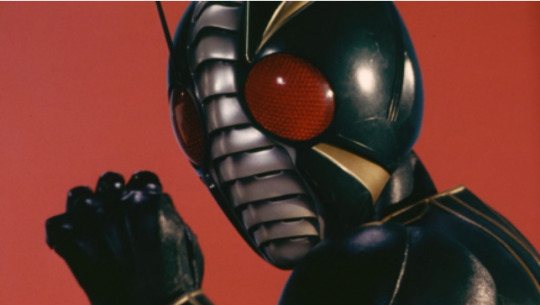
35 notes
·
View notes
Text
Toshiki Inoue Interview about Shougeki Gouraigan and an overview of his writing process
This interview was published in the booklet with the first BD set of the series Interviewer: Please tell us how you became the main writer of "Shougeki Gouraigan!!"
Inoue: I got a call from Amemiya saying "It's been a long time, let's work" and I said "Ah, got it". Actually when we met, for the first step we started with approaching the setting of "Light vassal" and "Shadow vassal". Broadly I wanted to make something like a comedy but he wouldn’t listen to me.
Interviewer: Then director Amemiya wrote on his personal blog that Gouraigan would have aim to be a "strange thing"
Inoue: Maybe he was already tired with the same old stuff. (LAUGH) Even for action, he's not even using stuff like wires in town, because he portrays actions in an odd dimension. So he had in mind in the first place some kind of battlefield for actions. After that, to evoke that feeling of "strange thing" , the costumes (TN: the proper term used for costumes is kigurumi which means something like "cartoony costumes") interact in a contest of ordinary life, right? That's the main ingredient, it's not the costumes doing laundry. It's the gap related to daily life that's funny. I think that we moved in order to make that the core of the comedy.
Interviewer: There must have been several meetings, right?
Inoue: We sure had a lot of them, before putting hands in the scenario in order to decide the direction of the show.
Interviewer: That includes director Amemiya?
Inoue: Of course, but it’s like even he couldn’t figure out what to make out of this program? (LAUGH) It’s not a matter to just depend on his ideas, but i wonder how much time it would have taken to reach a common ground. It’s like we committed to pull it through, in the beginning. But, in the middle everyone gave up! It’s that sort of a show (LAUGH)
Interviewer: Considering it’s a comedy, everyone will have a different approach to it, and sure it will be hard to make them grasp this to those who want to watch it.
Inoue: Even if there was the concept of the gap made by the suits interacting in an ordinary life it didn’t pass so well I think. I even tried to convey it from the start in the script. Aaaaaah, why did it happen? I couldn’t make it pass. Not even once in that program. It’s not that a good point? When it comes to making the suits ridiculous you make them ridiculous. Usually everyone looks forward to the transformation, it elevates the coolness of the suits, but this product prefers to degrade this. That sure is new (LAUGH). It's Amemiya's idea. Rather than consecrating the suits you make them look uncool as they are. That’s the kind of treat they get.
Interviewer: In tokusatsu there’s a certain depiction of transformations' scenes
Inoue: In that way we turned around that conception
Interviewer: Depicting the suits in an ordinary life it sure makes harder the problem of giving the action scenes a peculiar flavor this time
Inoue: Isn’t this the cause of the battles in those odd dimensions? With stuff like the sophisticated mandala and that game feel in it, i think their purpose is to make the mind go “AAAAH”

Interviewer: Since they’re usually under human form, they really can return into the Light vassal form at any time, right?
Inoue: The human is a disguise, or rather that’s the point of view of the Light vassal, but what about the situation where “These humans are illusions” under their human eyes? It would be easy to accept such a situation. Maybe once they turn into humans even the point of view should be human. That is, their appearance is disguised by some kind of light that affects the human eyes, could it be? Because Light vassal (LAUGHS). Anyway that’s a directional matter, that’s why in the script I omitted the hints that indicate the human parts and Light vassal parts. So when you read the script I think it doesn’t turn out to be interesting. When it comes to watching it on screen though I find it very interesting.
Interviewer: I got the impression that the writing style differed from your previous works, were there any critical parts?
Inoue: It might be close to Changerion a little. I wrote it a long time ago but it’s still my reference point as a comedy. Sometimes I’m prone to write them. That’s why I didn’t find particular challenges concerning this product. Since the opportunity showed up again, I want to write comedies whenever there’s a chance
Interviewer: What comes to your mind when you write your ideal comedy?
Inoue: It’s true that Comedies are hard. You can’t make them pass as a low product, but it's no good to treat them as something intellectual. That’s why it’s important to have a lot of ideas. Then the dialogues. Situational dialogues are the bread and butter of comedy.
Interviewer: Any favourite part?
Inoue: In the first episode when Homeless Yamashita said something like “When life gets you a hangover, drinking will sober you up”, when I watched it on TV I thought it was a good line (LAUGH). Many good lines kept coming to my mind, That’s why I didn’t worry too much about it.
Interviewer: So there’s the impression that this work went according to your expectations, right?
Inoue: You can say it. Well, there’s a direction that makes everyone proceed according to expectations, it went mostly like this. But when it comes to shooting it the reactions were really perplexed. It mostly went according to the script but people were “What did you make us shoot!”. It’s just that in this kind of program people who disagree are really picky. I think there were a lot of unagreeable people.
Interviewer: As if they didn’t know what they wanted.
Inoue: Yeah. So it’s not a matter whether this program is good or bad. It’s more like a matter of if you can accept it for what it is. As a matter of course this program would get complaints.
Interviewer: There are people who also demanded to make it more serious right?
Inoue: A lot. It’s really a program that neglects that kind of person. There are also a lot of people who can’t understand where the fun is.
Interviewer: With its late night slot broadcasting, did you have in mind an adult audience?
Inoue: It came up something like that during the planning meetings, the scene of Hitomi making a bath would have certainly been accepted. But with tacit consent, I went to write scenes with sexual appeal as I wished, even Amemiya was left alone when filming in this regard.
Interviewer: The Navi outlook was really something
Inoue: I was surprised too (LAUGH)
Interviewer: When it came to broadcasting, any impression that striked you?
Inoue: The first episode is still sane (LAUGH). It may be a bit hard to understand it though. With stuff like human form and light vessel form, the point of view gradually changes. But watching it with the young staff they said “That’s not true, viewers can keep up this far”. But I got nothing that made me think of that, what about it?
Interviewer: The goal of the story, or how should i put it, it started with no explanation at all of the circumstances, I was surprised.
Inoue: That’s why the point of the drama has become whether they can keep up or not.
Interviewer: At the start of the first episode, the meta narration of Hitomi got me surprised
Inoue: That was an important device, it’s thanks to this that the events were easy to follow yet. We sorted out her feelings by placing her point of view on matters. If it wasn’t for that the scenario would have been all over the place I think. This program is all about Hitomi, or rather she’s really the main pivot. The first episode flows through the scenes involving Hitomi, in these scenes it also became a proclamation of intents that this program is meant to be funny. The gist of it, this product could be seen easily as the story of Hitomi’s personal growth.
Interviewer: On the screen even the supporters made an appearance (N.T: I made supporters = 黒子-> Kuroko are usually black guys on the background in theatre that put on scene any kind of theatrical postures, for example in the Ran episode whenever she transforms artificial butterflies pop up with the black dressed supporters or when Sailor gamer transforms the same dressed supporter lady pops up to undress her to change her clothes)
Inoue: That’s a directional matter, same with the Hitomi narration, i think it was established to give a certain touch to the product
Interviewer: Were there any solid directions from Amemiya about the development of the story of the characters and their backgrounds and the like, right?
Inoue: There were some regarding the characters like “The path is clear!” It's not a line that I put, Amemiya wanted it! It’s like a line that fits a character that confronts the sea shouting at it. Eventually, other characters' backgrounds were picked for me

Interviewer: Besides Gou were there any rough spots with other characters?
Inoue: More or less I developed the characters as they were talking to each other. But in the end many things came up when I was in the process of writing which I gave life to it. That’s why there weren’t any characters that were particularly hard to write (LAUGH). It went all smoothly. The most troublesome aspect was the Light Vessels’ lifestyles. That’s where the comedy parts are, it was hard to make them whatever in a riciclation shop or rather it was troublesome to think about it. Sexual scenes with suits floated in my head but when it came to writing them I didn't find them funny. Making some kind of osè skits when they were humans felt wrong yet. It’s precisely because they were designed for the suits that it can be said that the scenes were funny. Comedy and skits are separate matters.
Interviewer: Is there a favourite character?
Inoue: Hitomi was the most fun to write. With her rakugo mania, her aloofness, like a guy who’s fine with shutting himself off. In this environment Gou and the others brought her chaos. Hitomi’s absenceness of mind or rather her dull emotions was a really important factor. Then there’s Jin. it makes sense that he gives off a feeling of being out of place. And it makes sense too that Gou is a straightforward character. it’s stupid eh, just stupid (LAUGH).
Interviewer: Kinda all the Light Vessels are… (LAUGH)
Inoue: That’s true, everyone’s stupid. Sure no one is smart (LAUGH). But because they went to Earth there’s a sort of a gap. You can also say that when they arrived on Earth they got exposed to a lot of new stuff so they get more and more dense.
Interviewer: Originally the characters should have been passionate and wise right?
Inoue: It wasn’t thought of what kind of characters would have inhabited the Spirit World. Just, more or less they commited sins, so I had to put something to fit the occasion in everyone and putting something that would have made them not detached from the world would have been a little wrong.
Interviewer: Isn’t the character of the old lady really appealing?
Inoue: when the Light Vessels got all assembled, I thought that she would get too bothersome. Since depicting her like a young wife or in search of specific attention would have come out wrong in the moment. (LAUGH) There are Shou and also Hitomi, so the atmosphere would have changed up too much in the end. That’s why placing her as a perfect nanny was no good.
Interviewer: Inoue, did you have to go personally to the filming location to make instructions directly?
Inoue: I went just once but it wasn’t for this case at all. I couldn’t be there that much when they planned for the shooting periods, but the shop set was amazing, I was surprised.
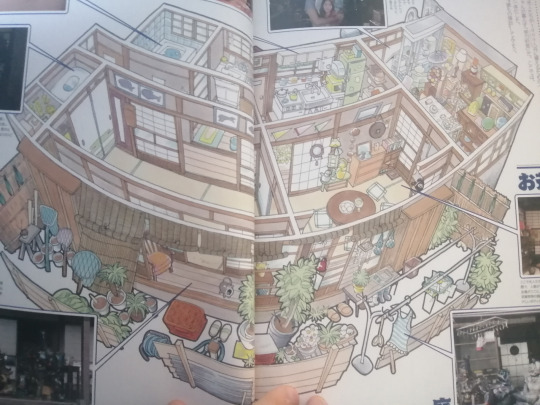
Interviewer: You had to go to have a talk with the actors, right?
Inoue: Whenever I went it was mostly for that. Even if this is the case, I had the occasion to meet them in this regard once.
Interviewer: How did everyone get along?.
Inoue: It was full of youthness. It was full of spirit and they were good young lads.
Interviewer: If there were some stories behind this program please tell us!
Inoue: When the program was about to start the broadcast I went to drink with the staff, I was scolded to have drunk a very expensive wine (LAUGH). At the time everyone was fixed with the program and the feeling was great. It was fun to have a drink together. The directors were all zealous guys, so I think they had inside their head the purpose of this comedy. So we talked about various things. There was an episode like that.
Interviewer: From episode 1 to 4 please tell us what to look forward to.
Inoue: Gou starts the searching of the Dark Vessels alone but eventually he will make friends. Each character's introductions are surely interesting. There’s this sort of feeling that I like that gets you excited as the episodes go that it’s like “What kind of character will show up next?”. The exchanges with the leading actors and new characters are funny too. Please look forward to that.
16 notes
·
View notes
Photo










Designs by Katsuhiro Otomo (Akira) for “Harmagedon” animated movie (1983) directed by Rintaro. Full gallery : https://www.catsuka.com/gengal/artworks//genmataisen https://www.pinterest.fr/catsuka/animation-artworks/harmagedon/ ( Gengal update 1/31 )
1K notes
·
View notes
Text
Kamen Rider 555 – Unwrapping
I’m starting a series of posts to talk about the so much discussed Kamen Rider 555, because it’s a series which I’m really devoted to as a fan of tokusatsu, let’s jump ahead

This first episode starts with a scene I didn’t really remember, but it’s usually a scene that it’s used in a bunch of Kamen Rider series to set the tone of the show: a bunch of researchers involved in top secret material get attacked by an unknown creature. This top secret material is none other than the Kamen Rider Faiz belt that it got stolen by this unknown creature which belongs to the main kaijin race of the show: the Orphnoch. For the ones who knows Kamen Rider, since its birth you can already tell that the organization involved in developing a kamen rider affair is plotting some dark schemes by default, with some exceptions of course, this is the tragedy of it. The episode jumps to one of the main cast protagonist: Yuji Kiba. He’s enveloped in a comfy familiar atmosphere reminiscing the past with his fiancee. This was a really tricky cut in my eyes since I’m used to have already the person transforming into Kamen Rider leading the narration of the first episode, but it happens that Yuji Kiba got put into a coma by a car accident with his family passing away. I’m going to tear apart the sequence of the events and talk about more this character in this episode in the next bunch of words. Toshiki Inoue, the main writer of the show, must have really undegone to an existencial crisis to have become entangled in these kind of stories. To put it in place, Kiba’s story reminds me some sort of a sequel to the Kamen Rider Emperer’s one, a Kamen Rider character appeared in the feature before faiz in the later half of the story: KR Ryuki. it’s the sort of a tragedy that leaves you with a sour taste: once you’re dead you’re unreachable, not only you become food to microorganisms, the only choice that is left is living through the words of others and often the words becomes food for thougths twisted in human greed. Inoue really did cut the crap in portraying these kind of messages around that period, while Agito, another show where he was the main writer, pointed toward a message of hope punching god’s face in a Kuuga’s vestige and self sacrificing heroes in a mundane setting, in 555 he explores the cynicism of the consequences of death, with a writing that becomes almost unbearable with its aggressiveness, he makes Kiba face the development of his enviroment after he was thought for dead and in fact he was, but 555 setting is made by people turning to a next stage of evolution, named the Orphnoc, after being in touch with death. This plays a lot with the conception and correct me if I’m wrong, that when people face a deadly situation their cognivitive abilities improve in a way that they take their lives by its horns, you know, the same taste of the medicine of what doesn’t kill you makes you stronger that we became to love and appreciate with the Saiyans. But Inoue pushes this furhter and turn these people into ghosts that haunt human existence. What kind of menace will they represent? And will Faiz be able to make a sense of this huge mess called life? Let’s find out.
I remember Inoue saying that he wanted to make the main story revolving around the three belts and not the characters wearing them as usual, this would make a lot of sense seeing how the main wearer of the faiz belt was introduced, as a side character: Mari, the main pivot character that makes the story unfold, is pursued by an appearently pushy guy and they end up in a kiosk, while the guy offers to “repay” Mari of a service she made voluntarily, and I appreciate that they took a moment to show Mari’s habits regarding food, although I know nothing regarding japanese gourmet, it’s a moment that stood out to me since the first time I watched it, Takumi Inui lounges in and he’s showed as a regular costumer of the kiosk, displaying his inclination to not talking, ordering Hiyake just by making sign of it, and sits by a table, while Mari has finished her culinary business, she tries to leave that guy behind and while she gets on her bike with a bag, Takumi recognize the bag that might have belonged to him due to the same outlook and she starts following her bearing little of the consequences, this is how he gets involved with the Faiz belt. You can already smell this series’ characteristics and thematics because in the next scene Mari gets squeezed in the pushiness of the guy that followed him and get to hang out with two other guys out of her true will, like being involved in a party you really didn’t want to go, I can certainly identify with her, but the party is pooped as she discovers on a night in a parking lot that they’re all dead, like puppets turned to sand and in this instant Takumi shows up demanding the bag, which makes him suspicious in the eyes of Mari as she starts to run, here’s another red flag for the developments. The true culprit, an Orphnoc different from the one that stole the belt appears and start chasing them, Takumi reaches the bag and discover that’s not his, inside the bag surprisingly there’s the faiz belt, Mari puts the belt on her waist and tries to transforms but it fails, Takumi stands there dumbfounded and Mari in an act of desperation put the belt on him and tries to change him as the Orphnoc attacks, almost forcing him as he question what she’s doing unable to comprehend, she’s like taking the revenge of what she had went through, passing the baton of passiveness and finally here’s the scene we were awaiting for, Kamen Rider Faiz making his appearence. I really like the ideas they put into it to mesh flesh and spandex. First for the Orphenocs which they manifest themselves as flesh without skin on the surface of the subjected person, while the person manifests himself as a shadowy reflection, also the Orphnocs shape into various forms that suits the being they represent. Then we have Faiz that while he’s in action he twitches his right hand almost making sound it as a psychological tic, don’t wanna say anything about it yet, but I like it as a detail.
So my thoughts for this first episode are over now, if I have to say something myself about them is I hope to find a way to shorten the descriptive chunks, I hope you appreciate them and I’m glad you took time to take a read, it means a lot to me.
0 notes
Photo







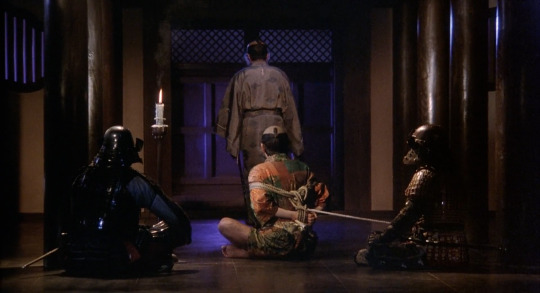

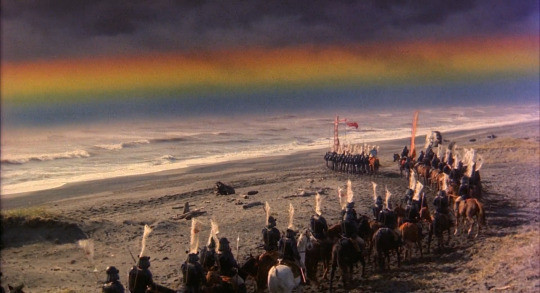
Watched Kagemusha directed by Akira Kurosawa and it’s fantastic. One thing i forgot about historical dramas directed by him is how he spends a lot of time in just showing in fact all the juice of the movie it’s not on the script at all, there’s a specific scene that had a huge impact on me and i discovered i got emotional on it once it was ended, the movie talks about a “doppelganger” that takes after a warlord after his dead, but the limit between the warlord and the doppelganger blurs if you take some elements in consideration, what’s keep the spirit and the core of the warlord is a slogan that ends with “be unamovable like a mountain” and what is mesmorazing about this movie is how the direction is very good at portraying the shogun that barely talks and infuse him with personality just with shots that accentuate expressions, although i don’t remember the technical terms to talk about it too deeple but oh well
0 notes
Photo
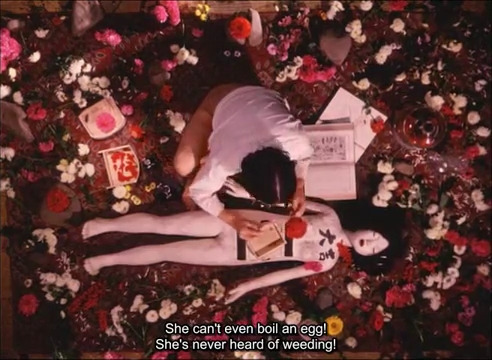


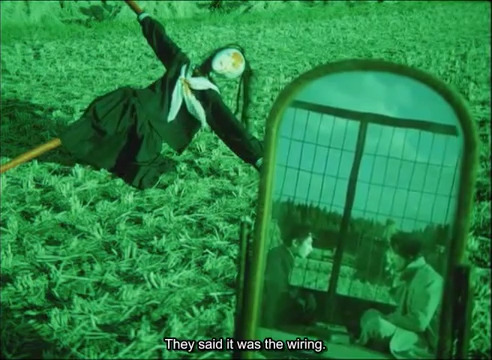
Can’t get Pastoral to die in a country out of my head, it’s truly mesmerizing, like Throw away your books rally on the street the movies presents us with a series of impressions, but in this movie each sets it’s so infused with a deep sense of melancholy
0 notes
Text


From flashman episode 43, it made me hint how hands are a powerful tool for expressing connection, in bad ways too, also from what i saw even maskman have some scenes with large focus on hands
2 notes
·
View notes
Photo



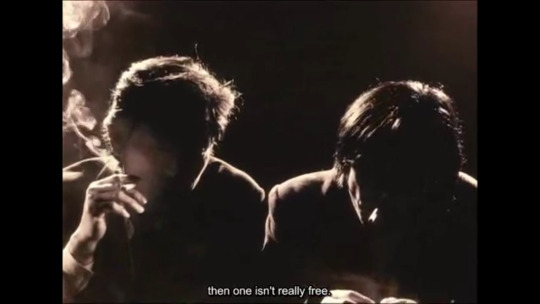


Watched Pastoral to die in a country and i really like it, watching terayama’s movies i can see japanese director’s legacy till this days, especially in tokusatsu, how the color palettes are chosen, in Garo’s Moobow Traveler for example i see some resemblance with the first shot
4 notes
·
View notes


